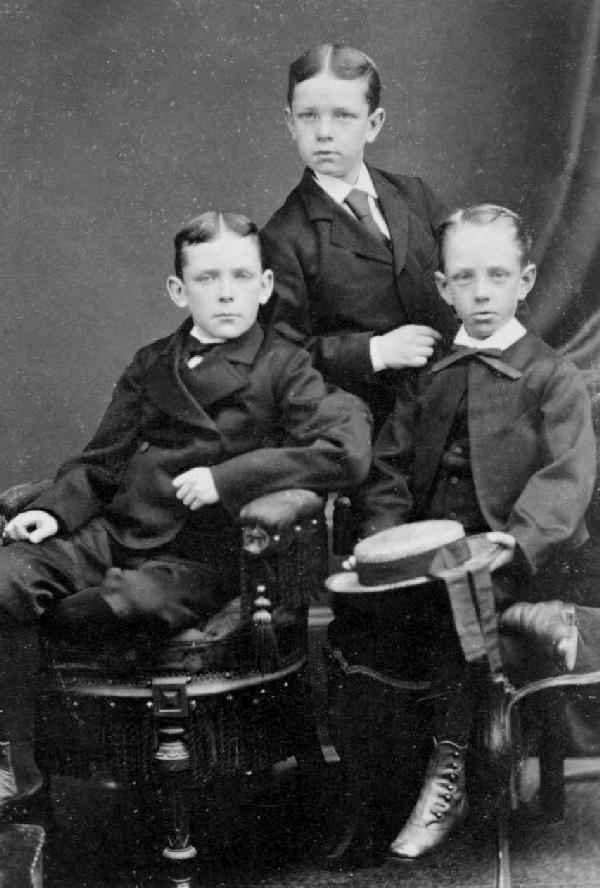
Boys' Collars: Conventions

Figure 1.--Collars were commonly used in the late 19th century as age specific clothing. Thus as a boy got older the style of the collar he wore with his suit changed significantly with his age. This convention is illustarted by this English 1870s CDV of three brother photographed in Blackpool/Blackburn. Image courtesy of the MD collection.
|
|
Collars were commonly used in the late 19th century as age specific clothing. Thus as a boy got older the style of the collar he wore with his suit changed significantly with his age. As a boy grew older he progressed to different styles of both suit and collar. This was common through much of the 19th and early 20th century. The conventions here were widely accepted in America and throughout Europe. There were some differences in the collar styles popuklar in different countries and over time. We note that some boys wore the same suit for several years, but the type of collar and neckwear was changed as he got older. We note other conventions such as the buttoning the collar even when not wearing neckwear.
Age Grading
There are numerous examples of this archived on HBC. One can be seen here. Three English brothers wear distinct collar and neckwear styles (figure 1). Similar family poftraits can be noted from many other countries. The younger boys has a collarless jacket with his shirt collar outside (tie is obscuring shape of collar). Note that the younger brother also has a different suit style. The younger brother's hat, complete with streamers, is the only one displayed in the poirtrait. The middle boy (standing) has a single-breasted jacket with pointed collar on his shirt. The older boy has a double-breasted jacket and perhaps a wing collar on his shirt--it is difficult to be absolutely certain. A HBC reader writes regarding the posing of this portrait, "I can understand why the boy at the back could not easily display his hat as it might obscure one of the boys in the front, no reason why the boy on the left couldn't show his though. Perhaps it was the photographer who decided this, I think that the picture is quite well posed actually, perhaps another hat at the front would have been a distraction and we are to make the (probably correct) assumption that all the boys wore similar hats. If that is the case then I would say the hat has been deliberately placed to show
the ribbons. So, equal marks for mother and photographer in my estimation."
Buttoned Collar
We note other conventions such as the buttoning the collar even when not wearing neckwear. Again there are many examoles archived on HBC. A good example is Arne Sohlstrom, a Swedish boy in 1928.
HBC

Navigate the Historic Boys' Clothing W eb Site:
[Return to the Main collar pagre]
[Introduction]
[Activities]
[Biographies]
[Chronology]
[Cloth and textiles]
[Clothing styles]
[Countries]
[Topics]
[Bibliographies]
[Contributions]
[FAQs]
[Glossaries]
[Images]
[Registration]
[Tools]
[Boys' Clothing Home]
Navigate the Historic Boys' Clothing Web chronological pages:
[The 16th Century]
[Early 1800s]
[The 1870s]
[The 1880s]
[The 1890s]
[The 1900s]
[The 1910s]
[The 1920s]
[The 1930s]
[The 1940s]
[The 1950s]
Navigate the Historic Boys' Clothing Web style pages:
[Dresses]
[Smocks]
[Bows]
[Bodice kilts]
[Kilts]
[Sailor suits]
[Eton suits]
[Blouses]
[Ring bearer/page costumes]
[Fauntleroy suits]
Created: April 29, 2003
Last updated: 4:37 AM 4/20/2007



